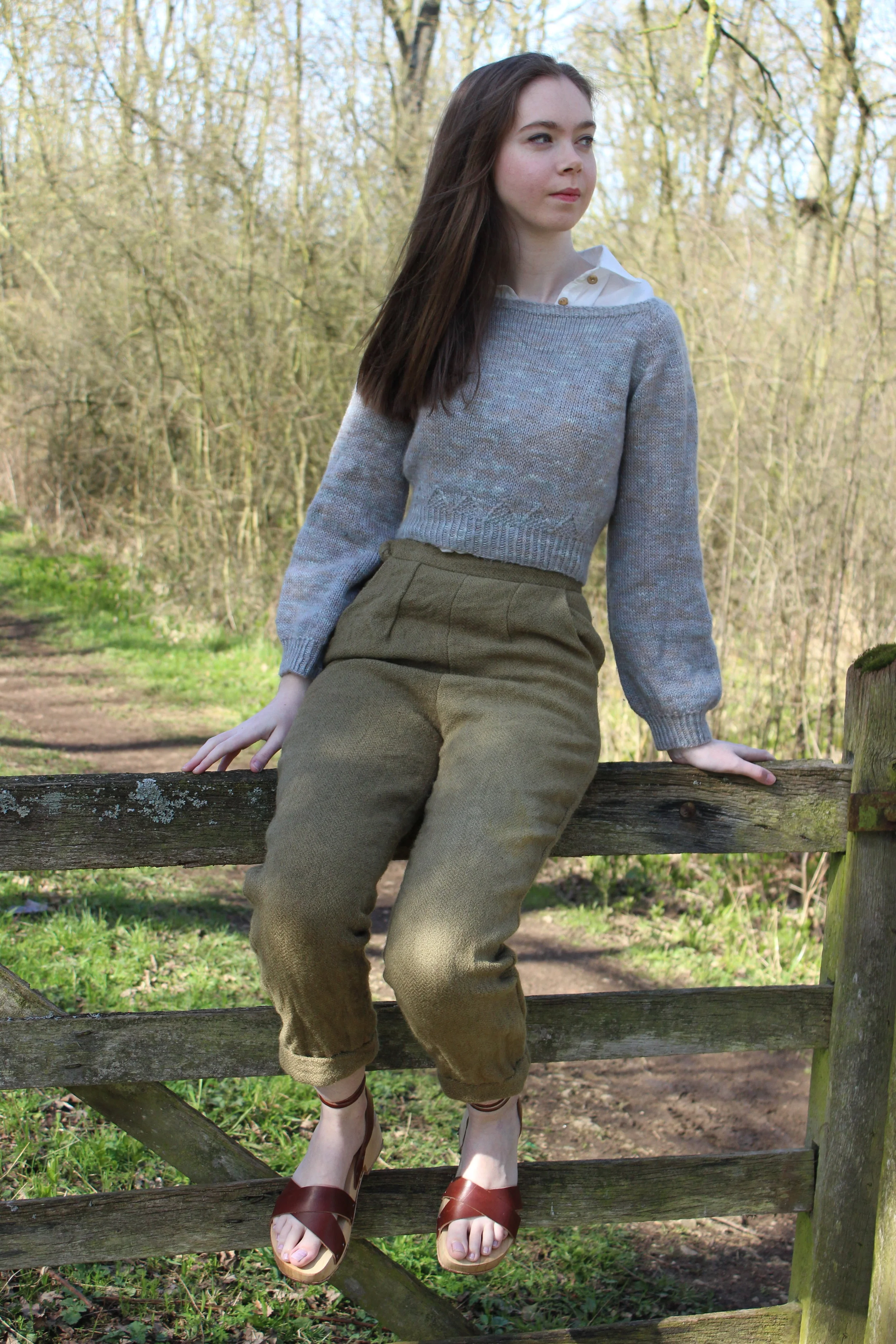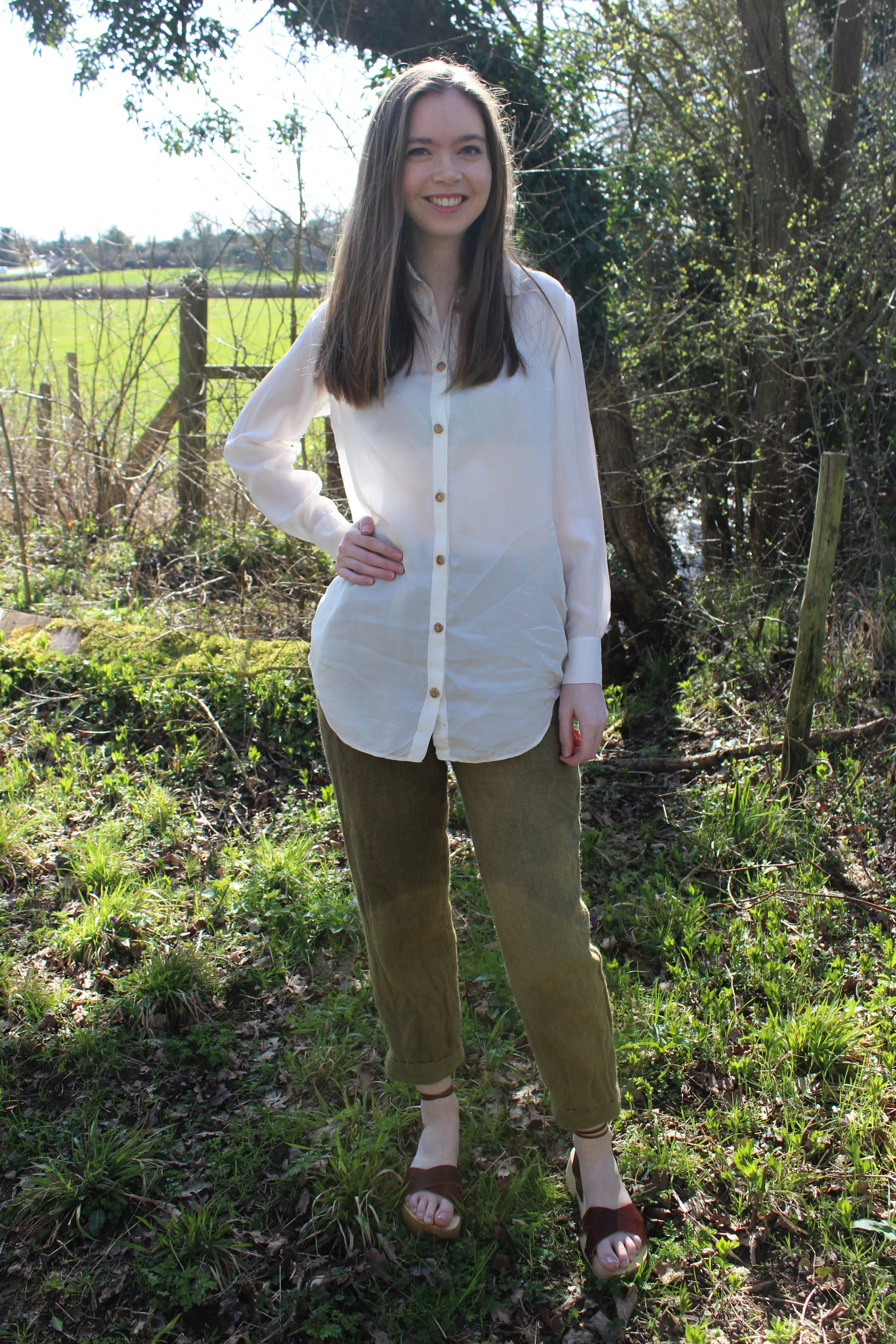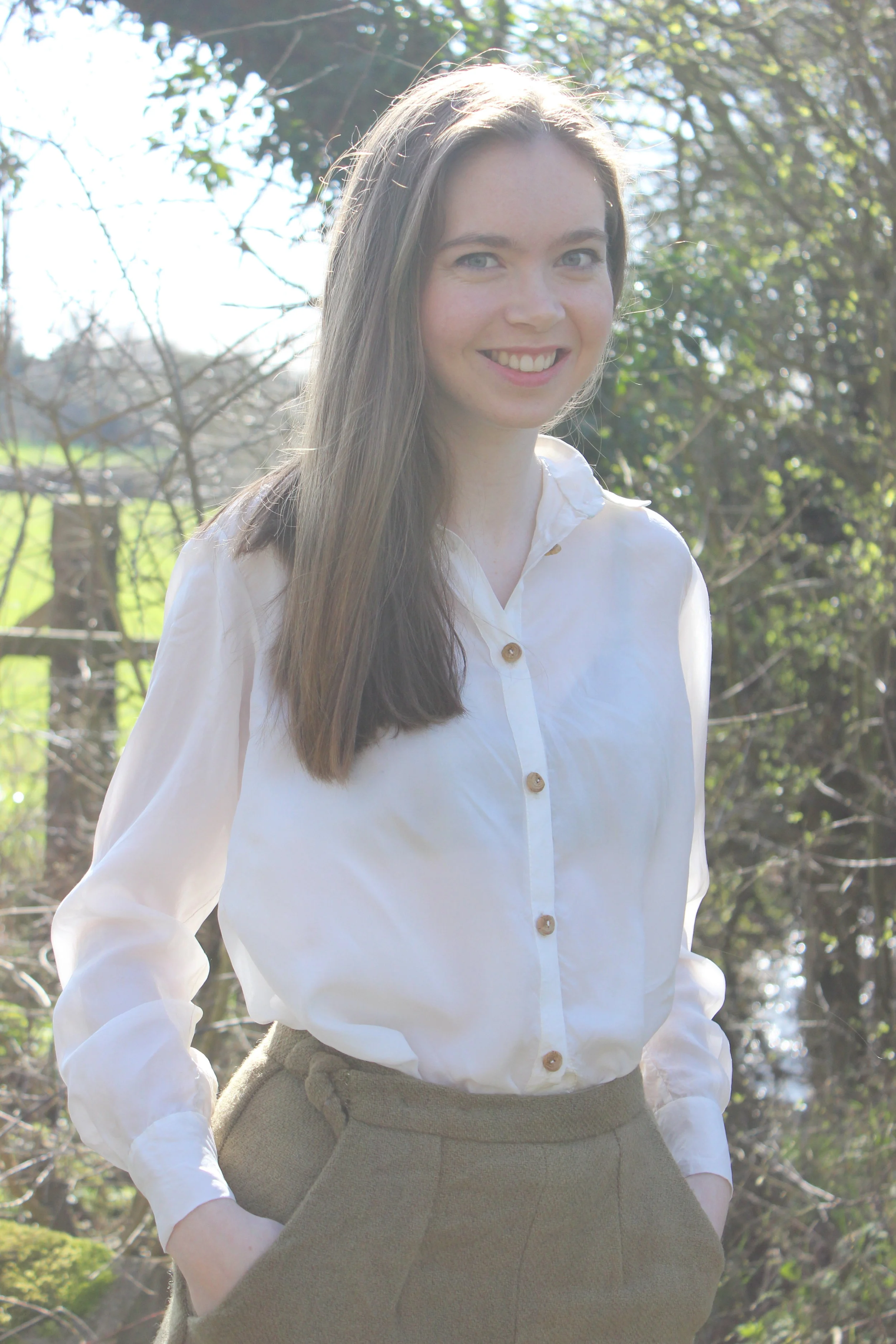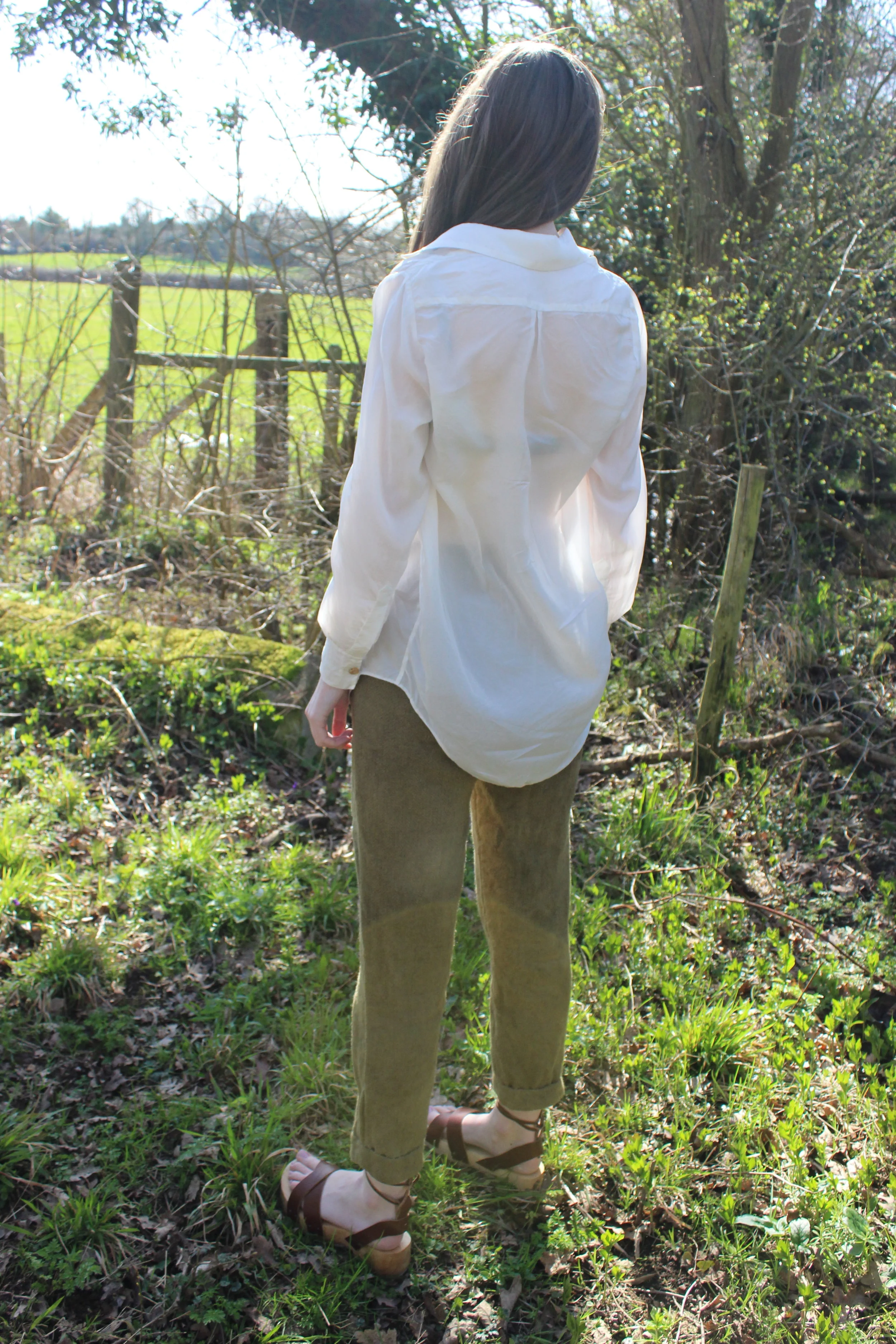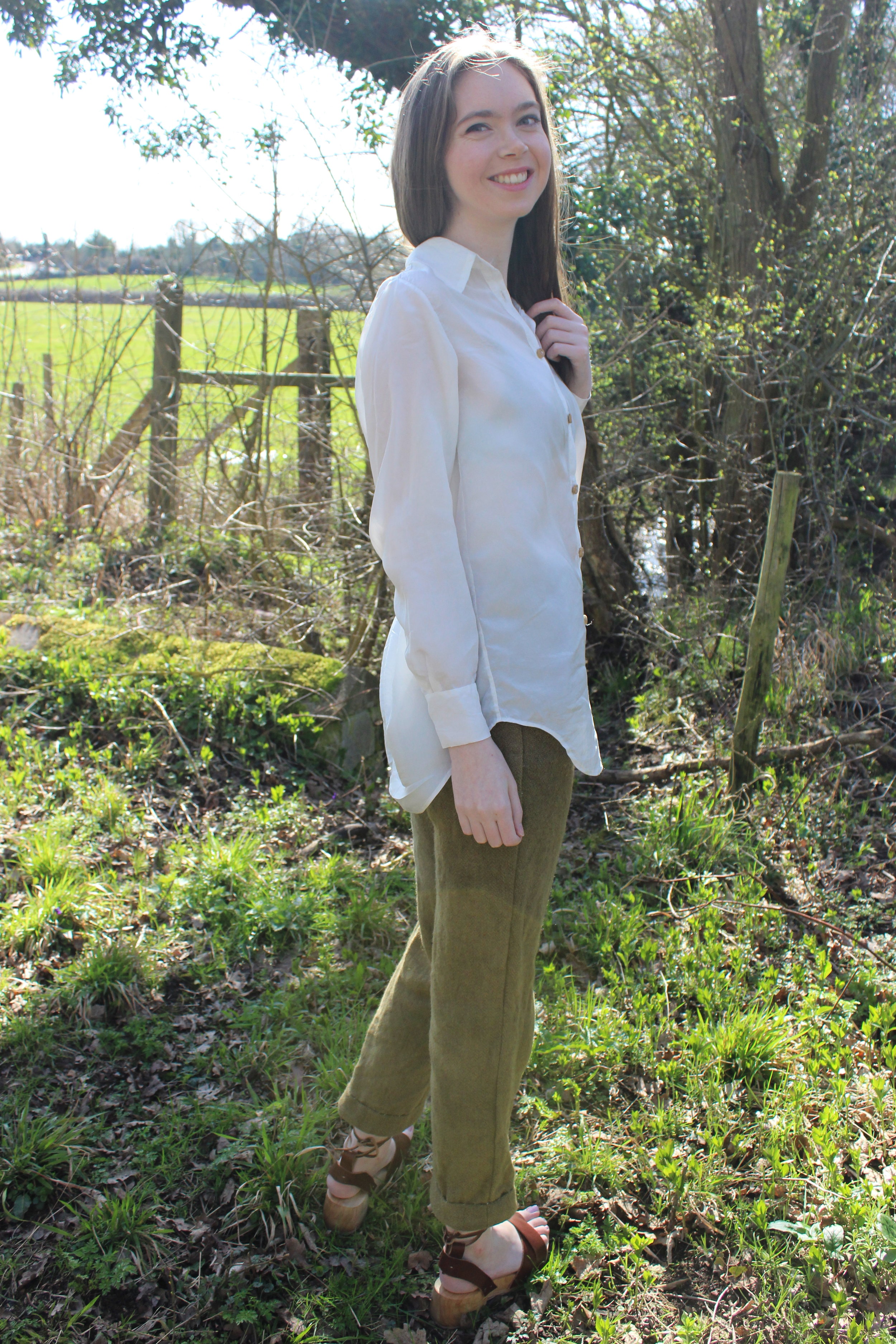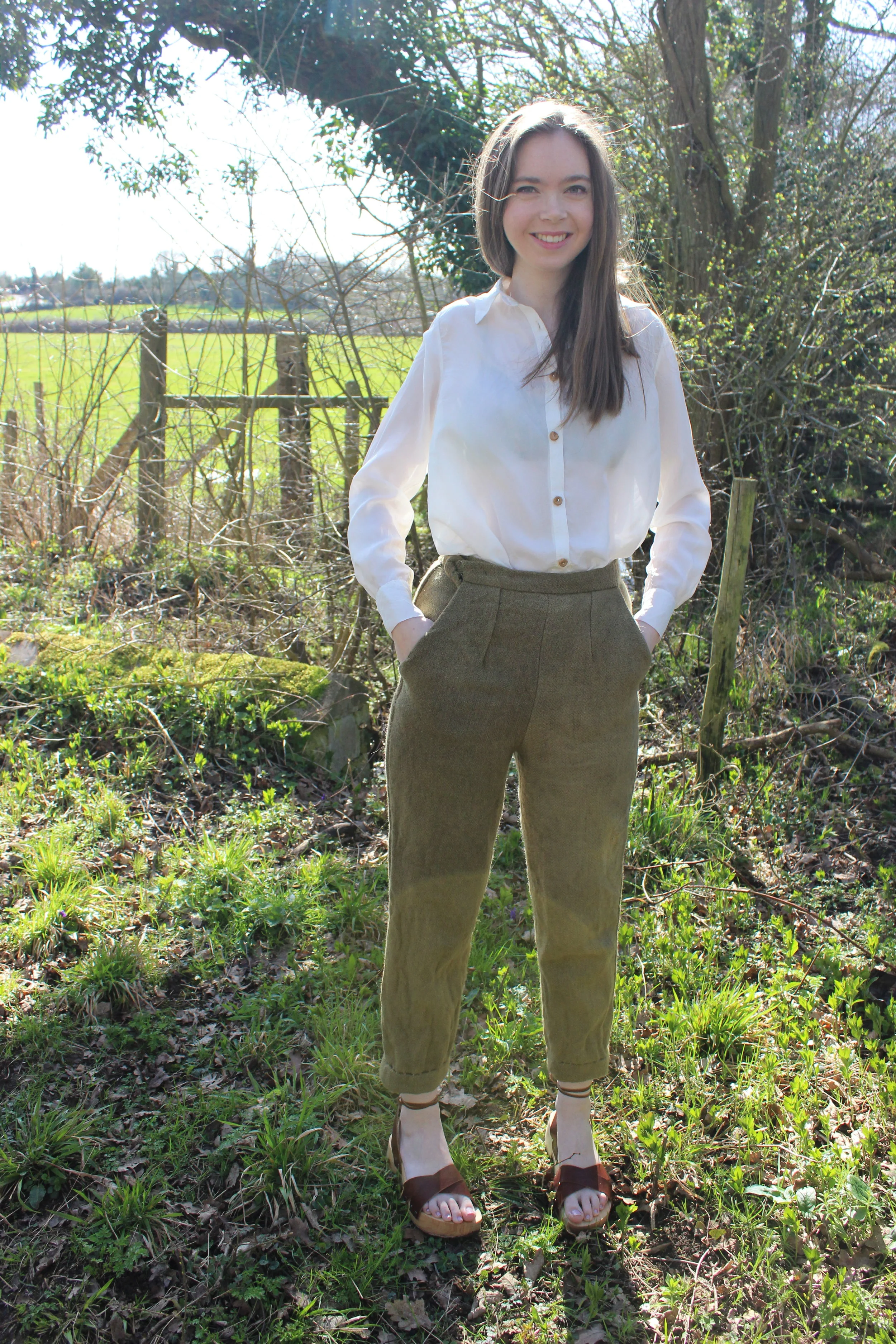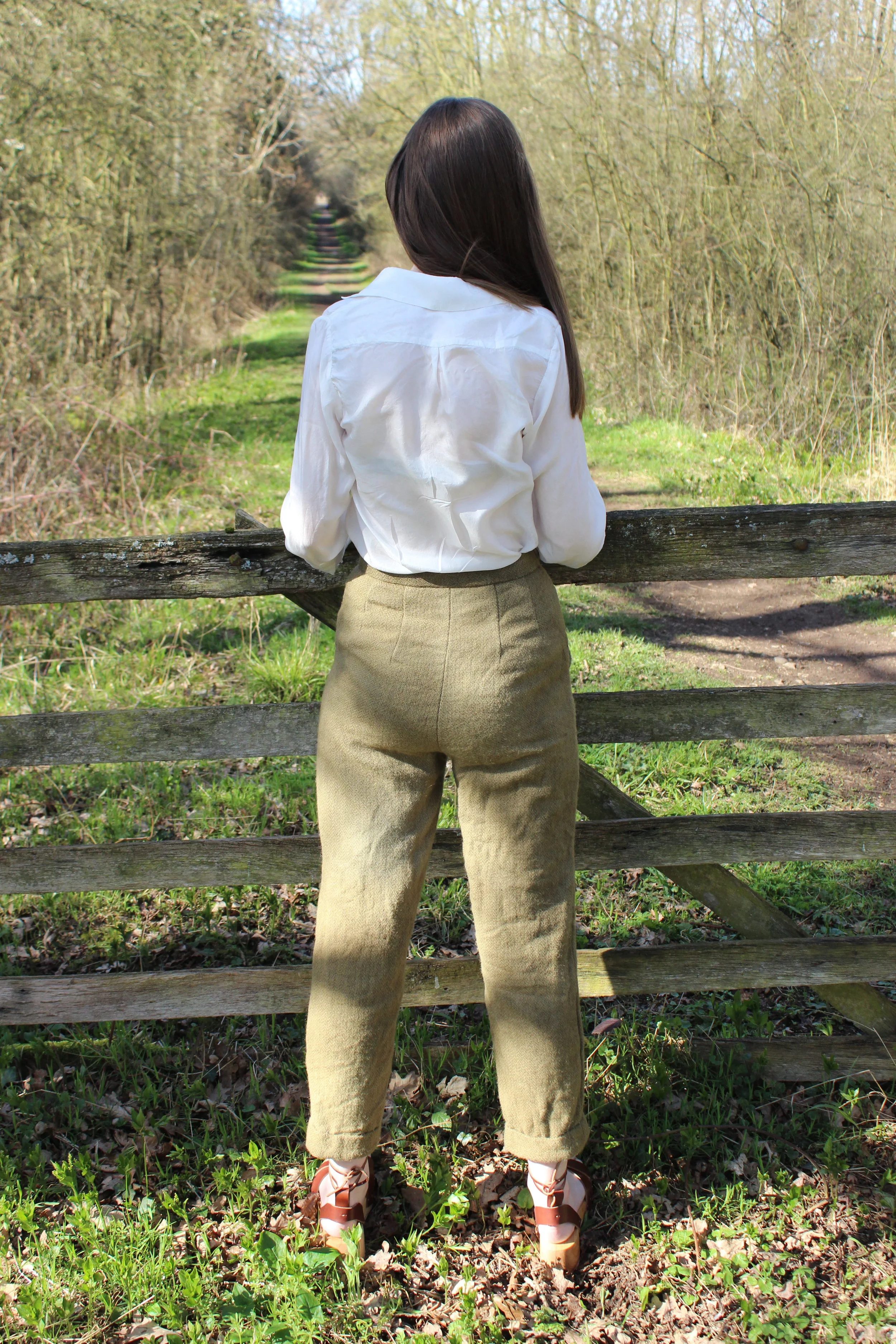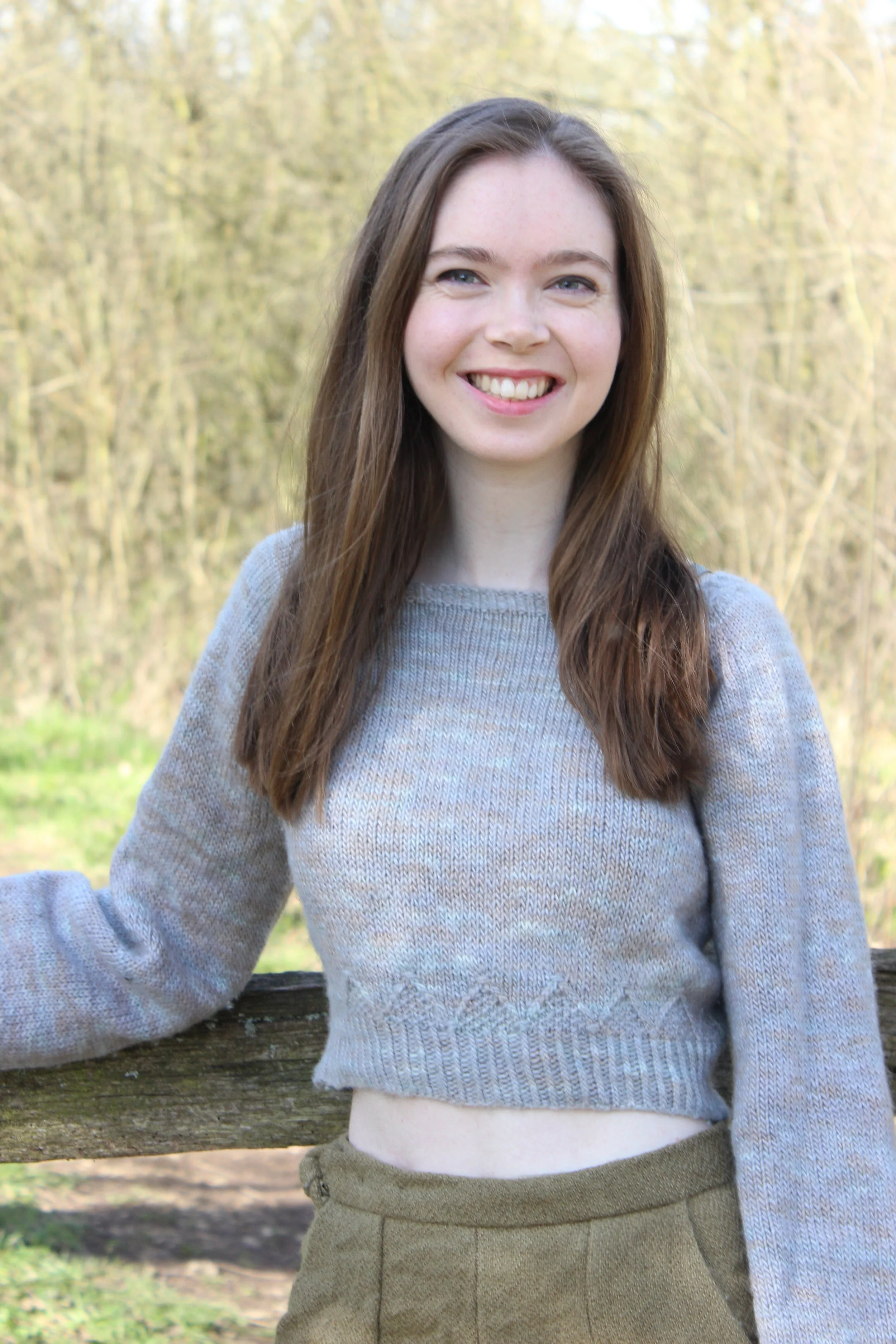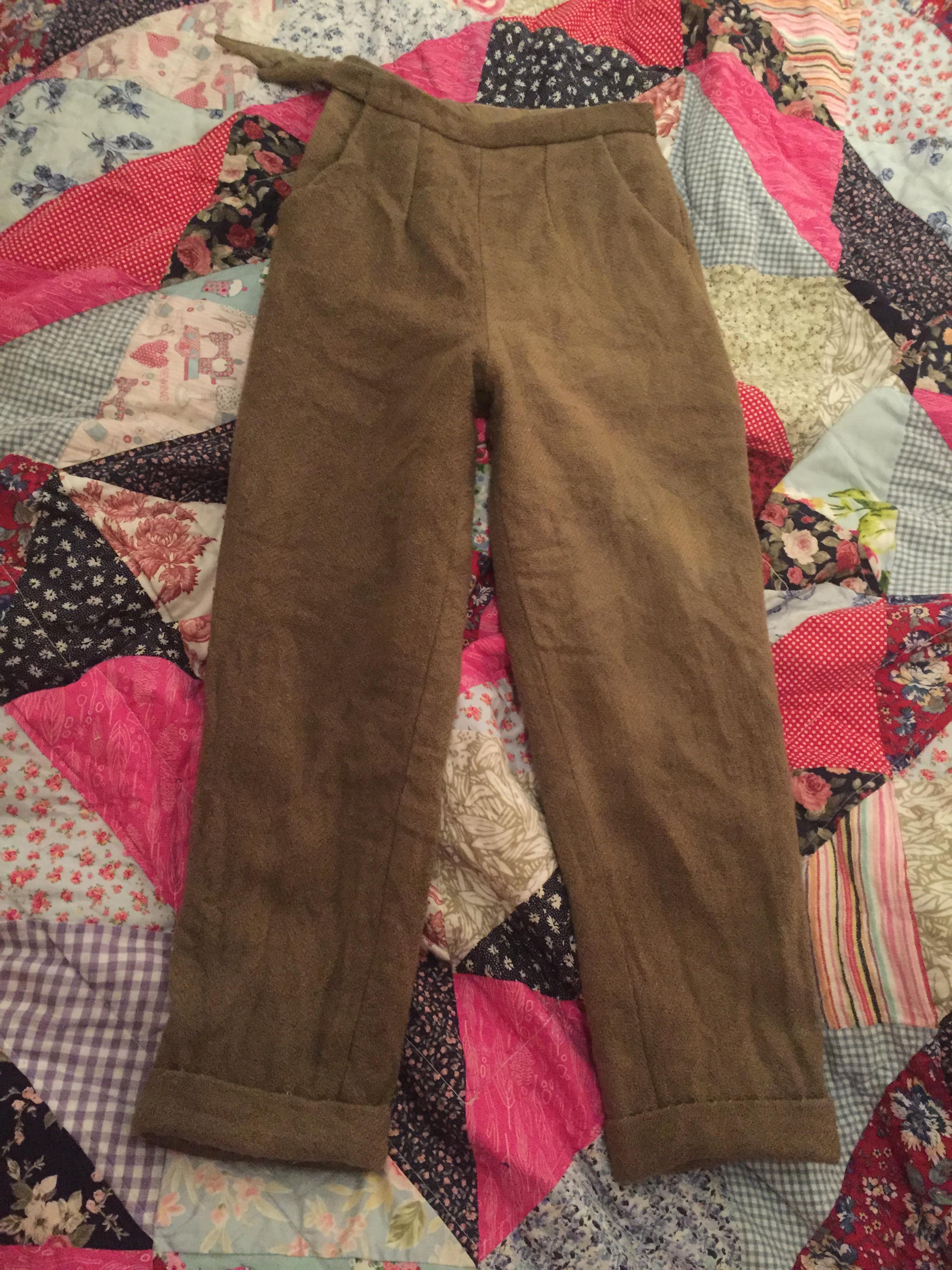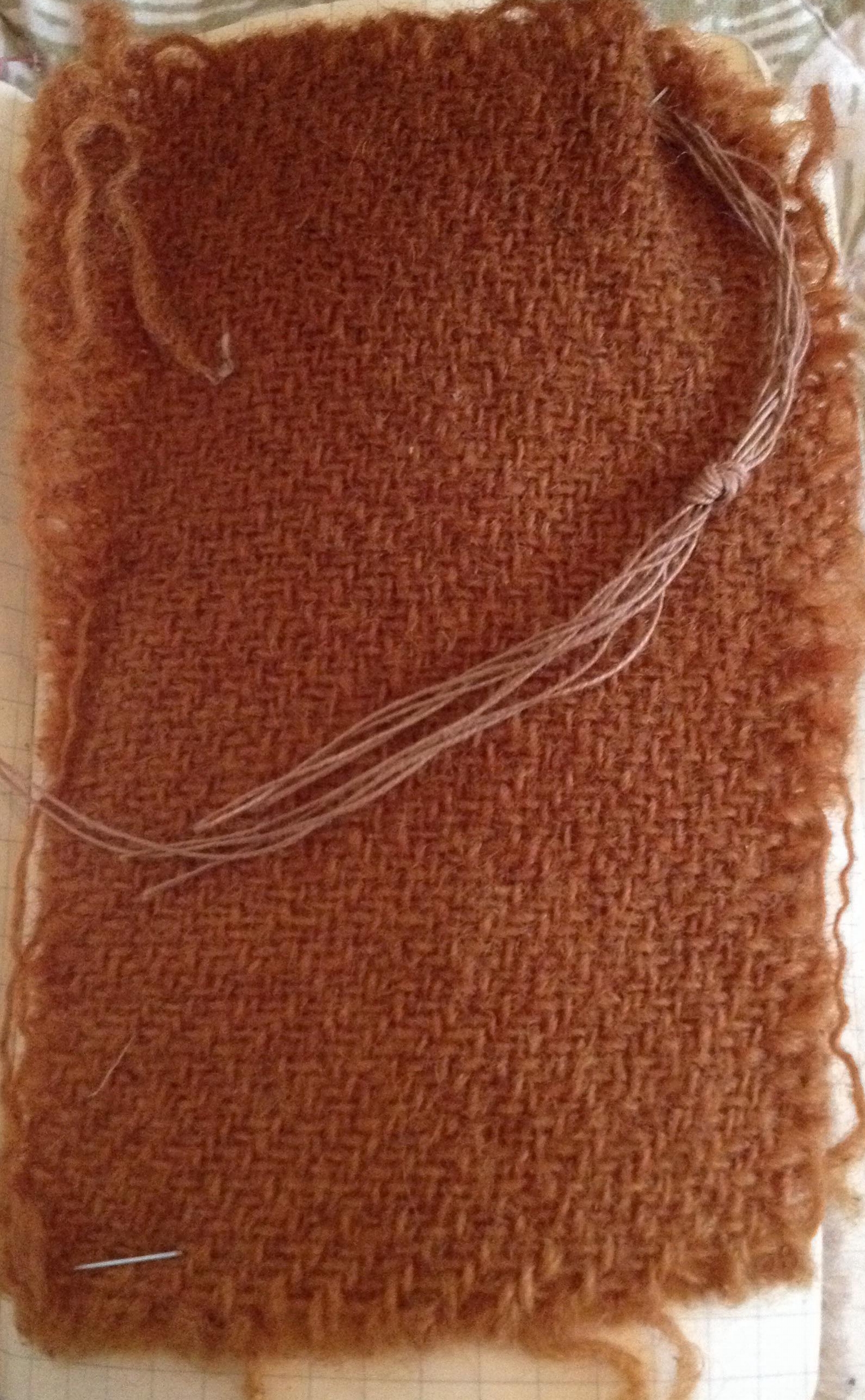Hello all! It's time to document the final element of my British Outfit; the trousers. I sourced my wool from Middle Campscott Farm in Devon for £30.50 per metre. The natural colour of the wool is a pale cream and I knew immediately that I would have to dye it, partially for aesthetic reasons and partially because cream trousers are practically an open invitation for stains. I looked at lots of different options for dyeing my wool, including onion skins, oak galls, leaf printing and woad. The red onion skins gave a lovely rust colour when I tested them but that was to a ratio of 8 onions per 10cm square of fabric. However, I was not up for the peeling, or eating of that many onions. Oak galls would have given me the dark black colour that I was after, but by the time I was hunting for them they had just gone out of season and the only supplier I found sourced them from Germany. Leaf printing did not work very well, perhaps due to the texture of the wool, the leaves used or my inexperience. Woad would have given me a lovely blue but would have cost me £40 for the shade of blue that I wanted for 2m of wool and involved chemicals that I did not want to use.

